For buttery, flaky, tender pie crust, this perfect homemade pie crust recipe is foolproof! It tastes incredible, has a perfect texture, and is easy to make and roll out. The all butter (no shortening) pie crust dough is made using a food processor, vodka, and a secret family ingredient to create a delicious dough that's easy to roll out and ideal for creating lattice or other decorative tops. Keep reading for the recipe and all of my tips and tricks for how to make perfect pie crust!
About few years ago I got really fed up with homemade pie crust. Up until that point I had only ever used my grandmother's pie crust recipe, which always tasted amazing but could be SO difficult to roll out, and I was tired of making ugly pies. So, I set out to create a recipe of my own that would produce homemade pie crust that's tender and flaky, tastes delicious, and can be easily rolled out without making you want to pull your hair out.
It took lots of trial and error, but once I created this recipe there was no going back! This recipe quickly became my new go-to pie crust recipe, and I use it for all pies that I make, no matter what pie filling or topping recipe I may be using.
This recipe has been a hit among readers, and I've heard from many members of our baking community that it's become their go-to pie crust recipe, too!
I can't wait to see your pie creations using this crust!
Jump to:
What Makes This Recipe Perfect?
If you ask me, there are four criteria that make pie crust perfect. This recipe checks all the boxes!
- Tender: Tender (rather than tough) pie crust can be achieved by limiting the amount of gluten that forms in the crust and by being careful not to overwork the dough. This recipe uses a secret ingredient to help limit gluten formation (more on this later!).
- Flaky: Great pie crust has lots of little layers separated by air pockets, creating that coveted flaky texture. This is a result of solid fats (like cold butter) being cut into the dough and then melting away as the crust bakes, creating air pockets. The bigger the pieces of solid fat in the crust, the flakier the crust will be (but also the more difficult it may be to work with). This recipe has just the right mix of flakiness without reaching into too-tough-to-work-with territory.
- Delicious: Butter gives pie crust its rich flavor. Some pie crust recipes are made using a mix of butter and vegetable shortening, but I prefer the taste of all-butter pie crust, like this one.
- Easy to Roll Out: This is a must for beautiful pies, especially if you want to create a lattice top or other decorative crust. This recipe contains just the right amount of moisture to make it easy to work with.
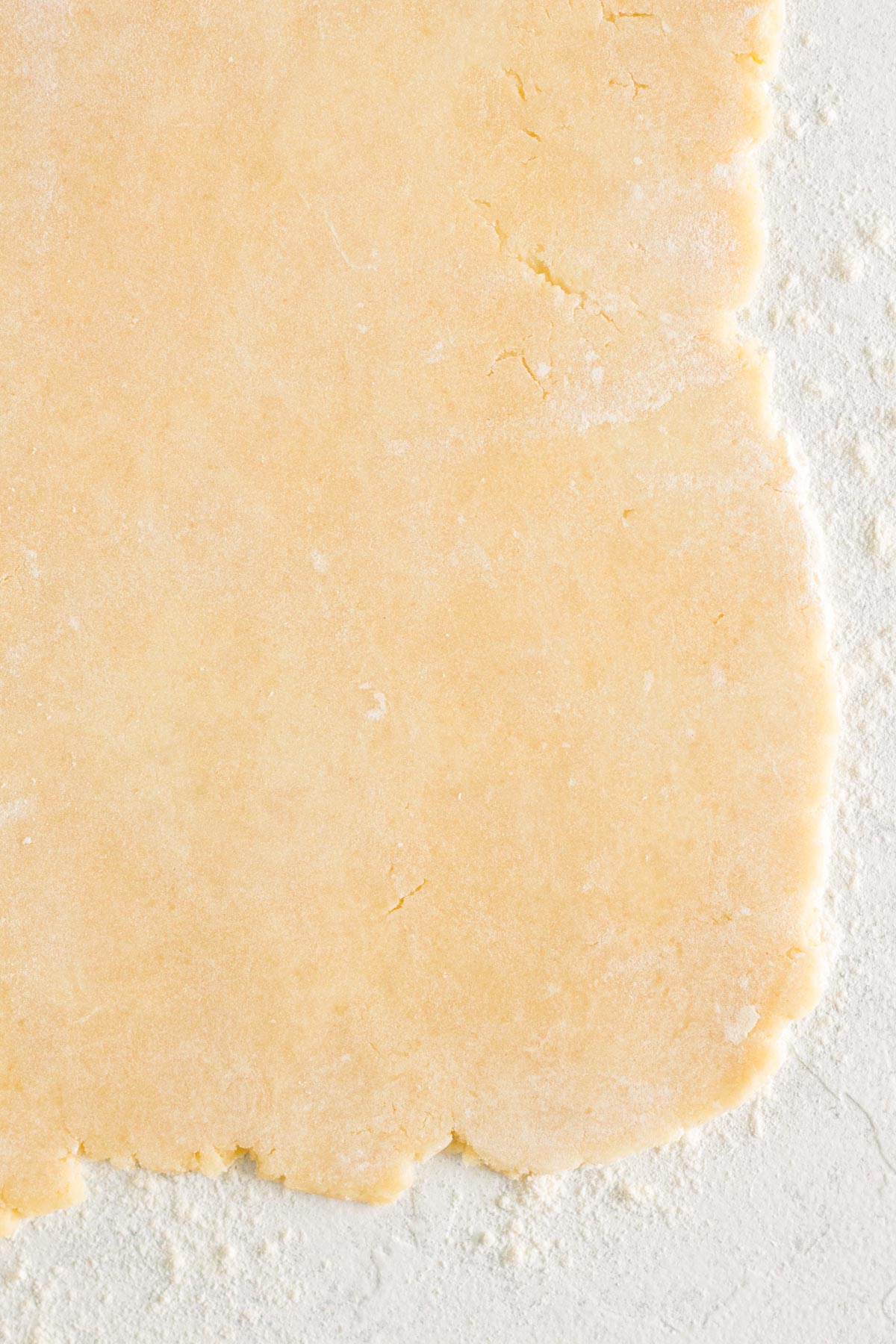
Why This Recipe Works
These are the methods and ingredients that make this recipe different and help it to achieve perfection status.
Cut butter into flour. Cutting cold butter into the flour has two benefits. 1) The butter coats the flour, helping to limit the formation of gluten (too much gluten will yield a tough crust). 2) Small pieces of butter will remain, which create air pockets as the dough bakes and gives us a flaky crust. Using a food processor makes this step quick and easy.
Mixing flour and butter in intervals: Mixing part of the flour (about ⅔) with the butter before adding the rest of the flour creates a dough that's easy to roll out. Doing this in the food processor makes it super simple. The bits of butter in the dough will be smaller, which creates a lightly flaky crust that's easy to work with.
With so few ingredients, each one is really key to the dough. The butter, orange juice, and vodka are especially key to this recipe in how they impact flavor and/or texture. Keep reading to learn how.
Ingredient Notes & Substitutions
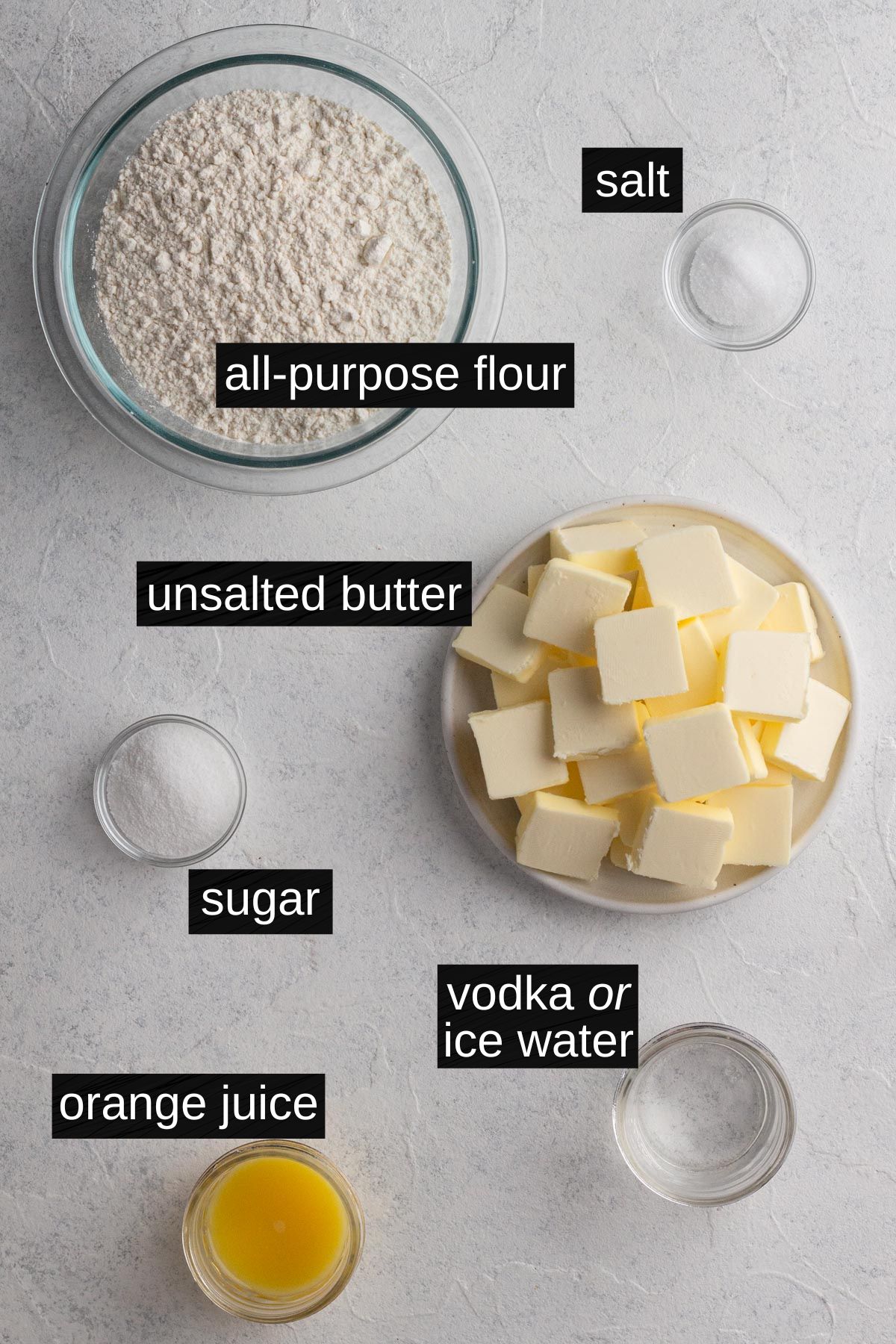
Butter - Butter gives this recipe its rich flavor, and mixing butter and shortening would dull that delicious buttery flavor. Shortening is often used in pie crust to add stability to the dough, but I find it unnecessary for this recipe.
Orange Juice - Orange juice lends a bit of acidity to the crust, boosting flavor without making the crust taste like citrus. This was my grandma's secret ingredient in her delicious pie crusts!
Vodka - Yes, really! Vodka has become increasingly popular in pie crust recipes because it helps to create a tender yet easy-to-work-with dough. Keep reading for more information.
See recipe card at the bottom of this post for full ingredient list and measurements.
Why Would You Put Vodka in Pie Crust?
As I mentioned above, the amount of liquid that you add to your dough will make or break your pie crust. It all comes down to gluten. Water helps with gluten formation, and we need some gluten to form in order to hold the dough together. Too little water in the crust means not enough gluten formation, which means a crumbly crust that cracks and tears when you try to roll it out or place it in your pie plate. Adding more liquid to the dough makes it more pliable and easy to work with, but too much water means too much gluten formation, which means a tough pie crust that's anything but tender. This is where the vodka comes in.
Unlike water, alcohol does not encourage gluten formation. And since vodka is 40 percent alcohol, using vodka in our dough means that we can add 3 Tablespoons of liquid without adding 3 Tablespoons of water. Essentially we can add a bit more liquid (to help with making an easy-to-roll dough) without risking too much gluten formation (to create a flaky crust). The alcohol evaporates as the pie bakes, so there will be no alcohol in the finished pie crust.
(Note: If you don't want to use vodka in your pie crust, you can substitute 2-3 Tablespoons ice water for the vodka in this recipe. The resulting crust will not be quite as tender, but it will still have a nice, tender texture.)
Special Equipment
In addition to essential baking equipment (like a mixing bowl and measuring cups), I recommend some special tools for making this recipe.
- Food processor, for mixing the dough.
Video: How to Make Homemade Pie Crust
Step-By-Step Recipe Instructions
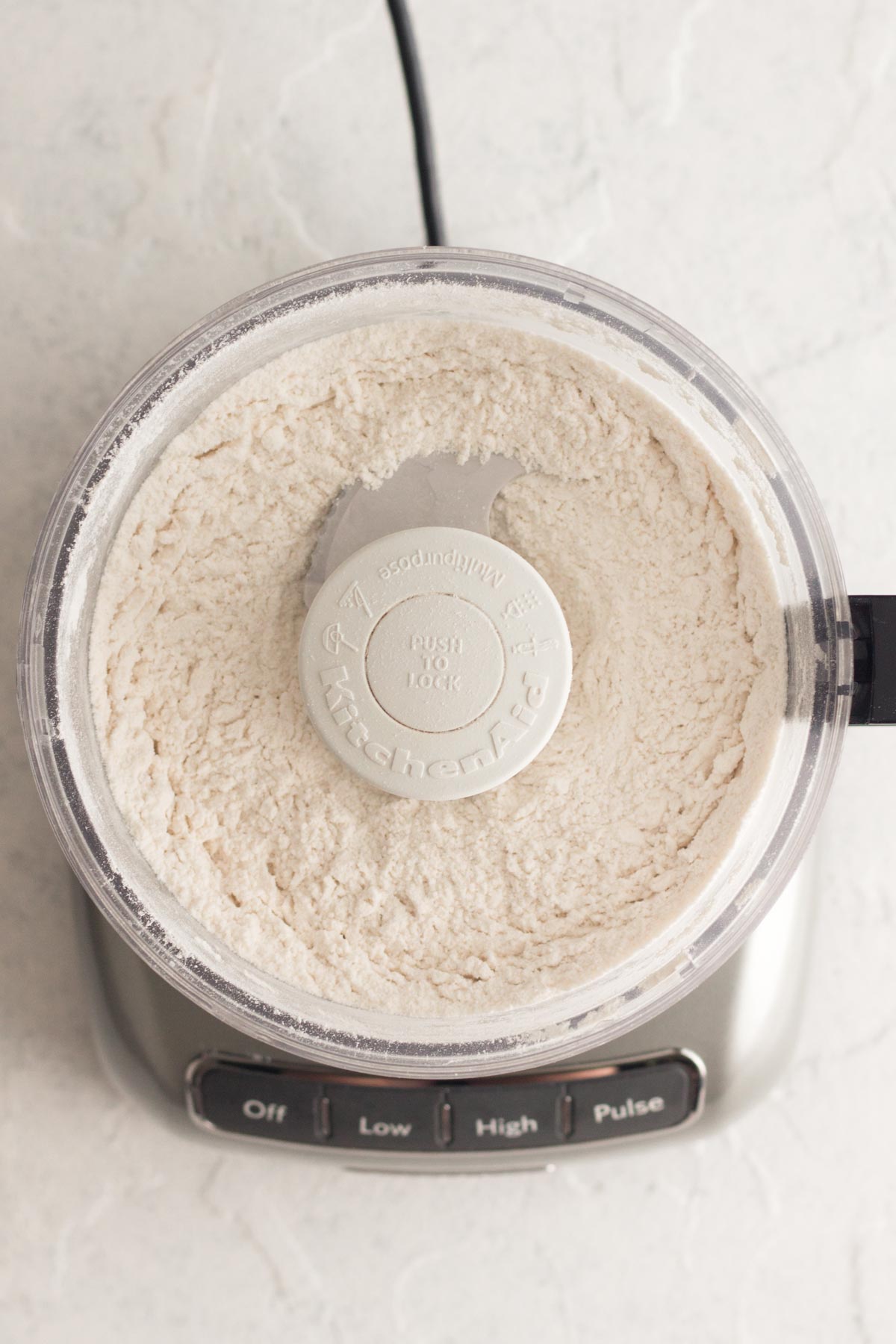
Step 1: Add 1 ½ cups of the flour with all of the sugar and salt to the bowl of a food processor. Pulse to blend.
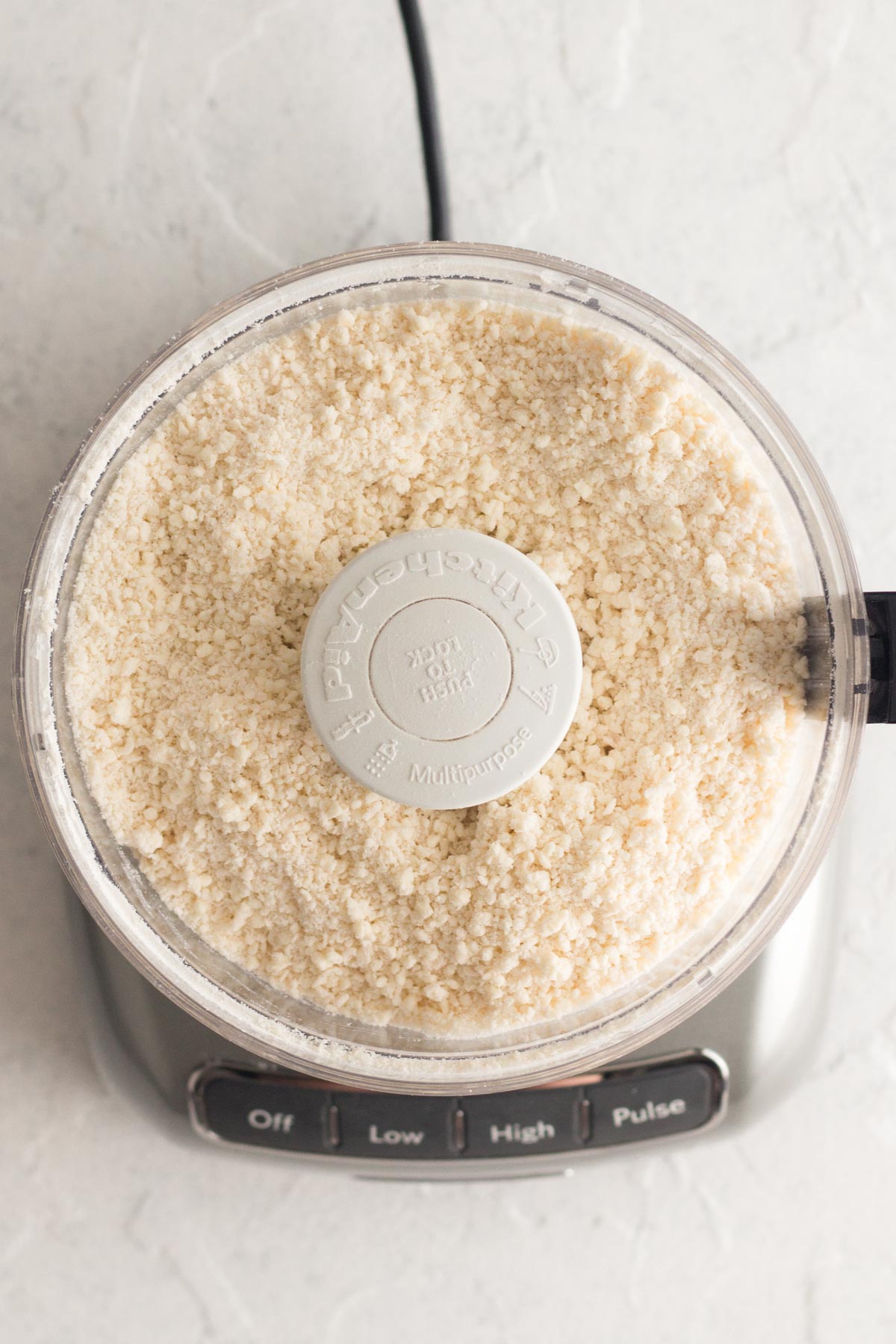
Step 2a: Spread the chilled pats of butter and pulse until no dry flour remains and the dough just begins to clump. At first, the dough will look like coarse meal.
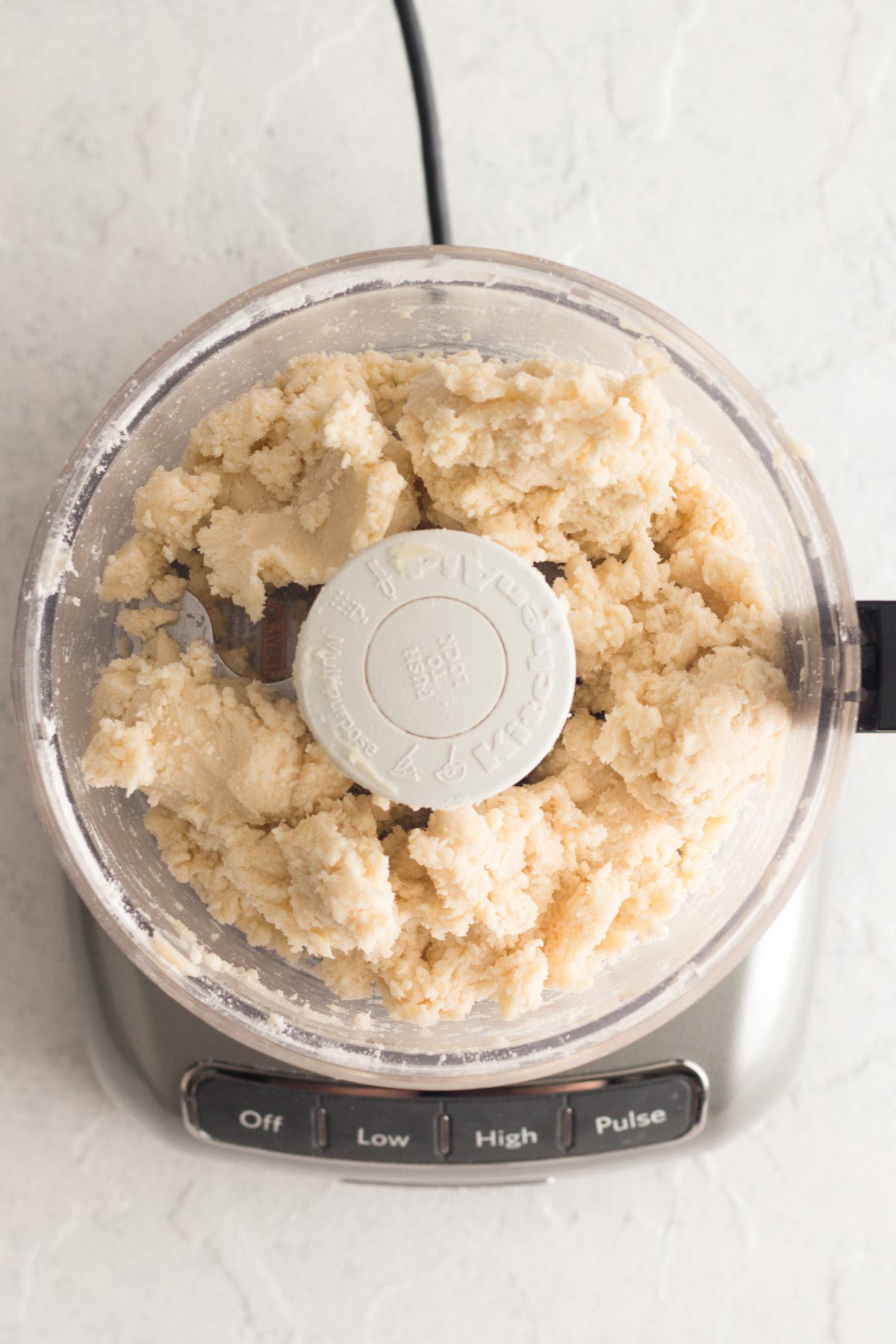
Step 2b: Keep pulsing until the dough begins to clump and stick around the edges of the food processor.
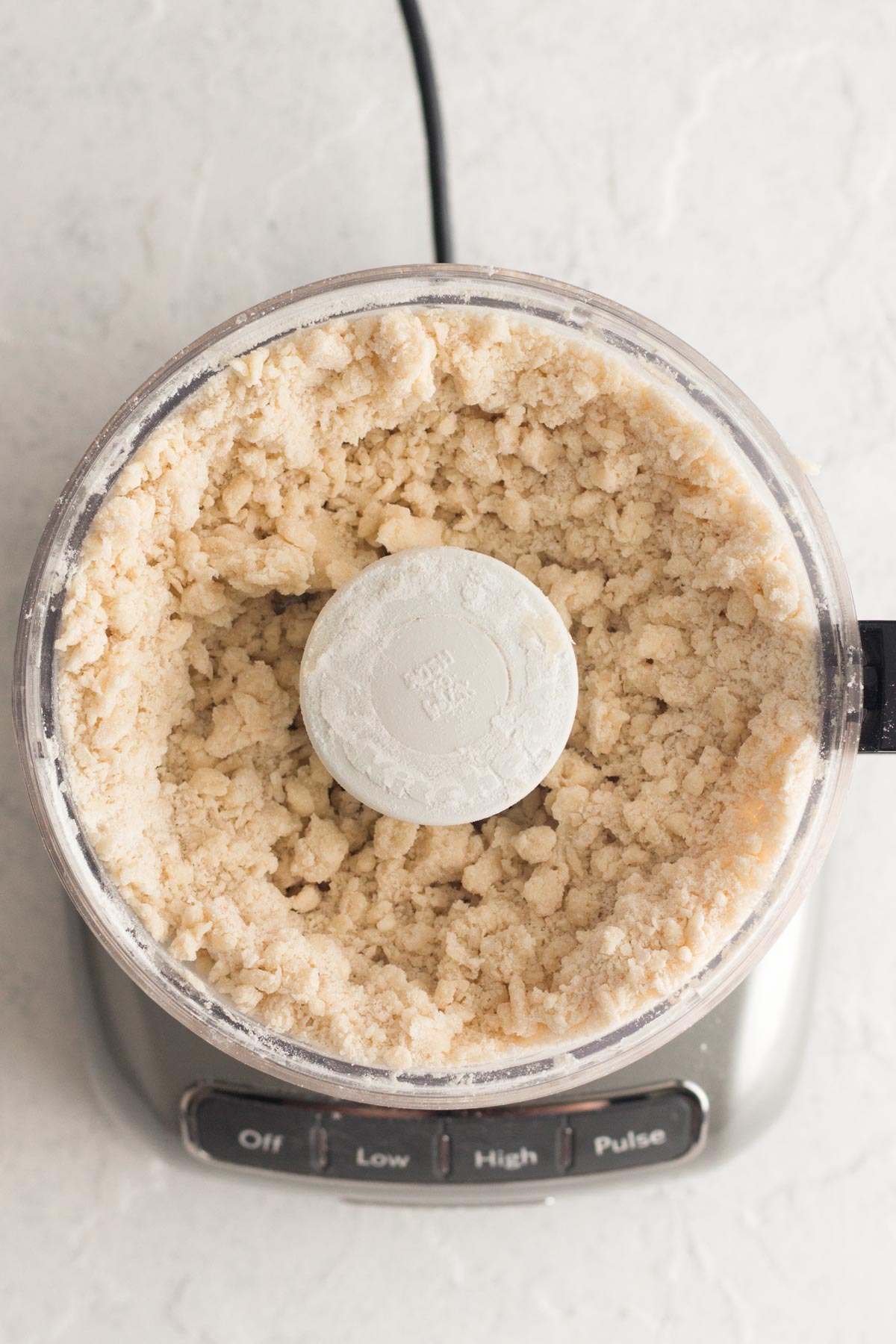
Step 3: Sprinkle the remaining cup of flour over the dough and pulse until dough is just barely broken up, about 5 pulses. The dough will be crumbly with lots of pea-sized chunks and no dry flour.
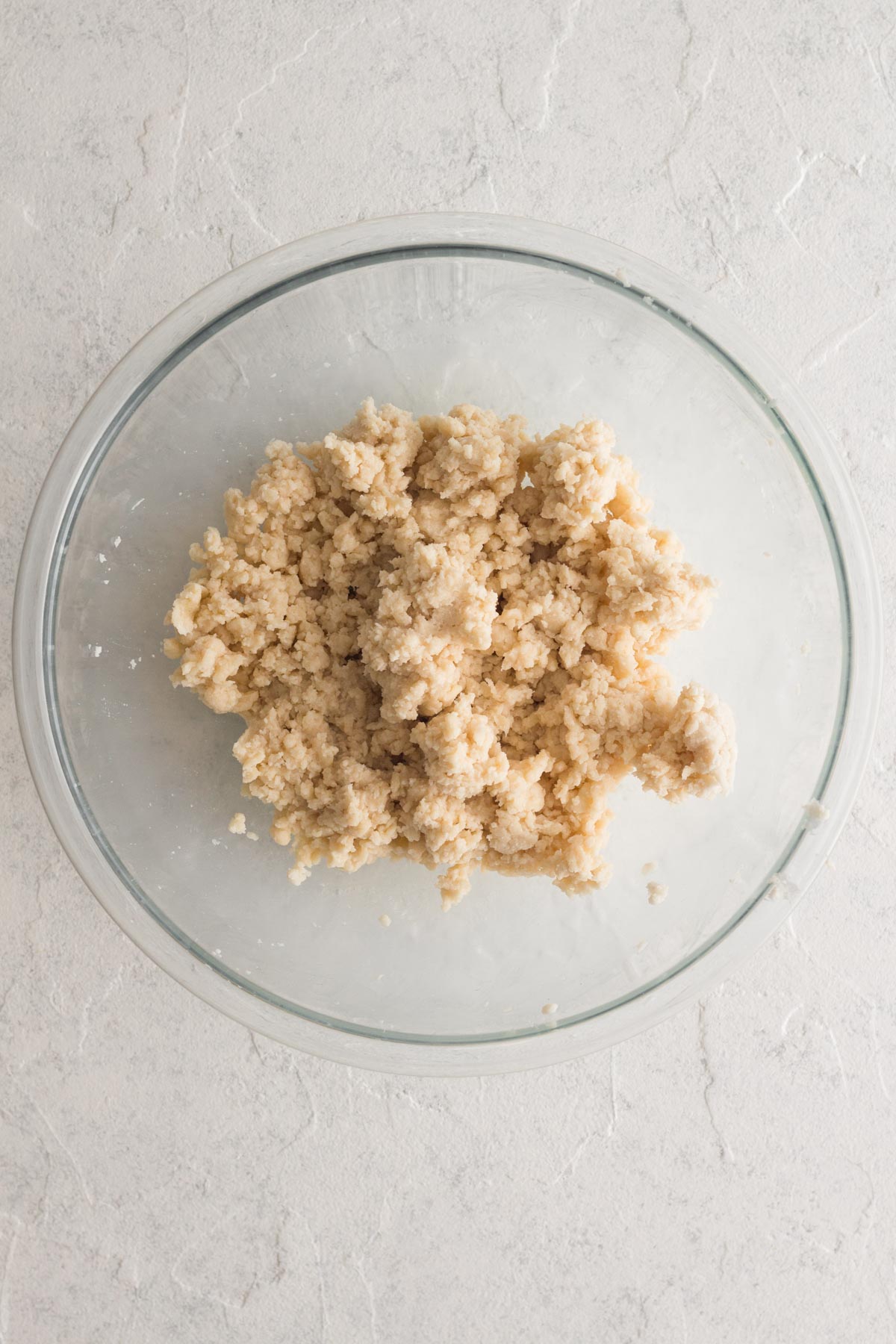
Step 4: Transfer the dough to a large bowl. Sprinkle the chilled orange juice and vodka (or water) into the bowl and gently toss and fold the dough until it comes together. The dough will still be a bit crumbly, but it will be moistened throughout and the bits will stick together easily when the dough is folded.
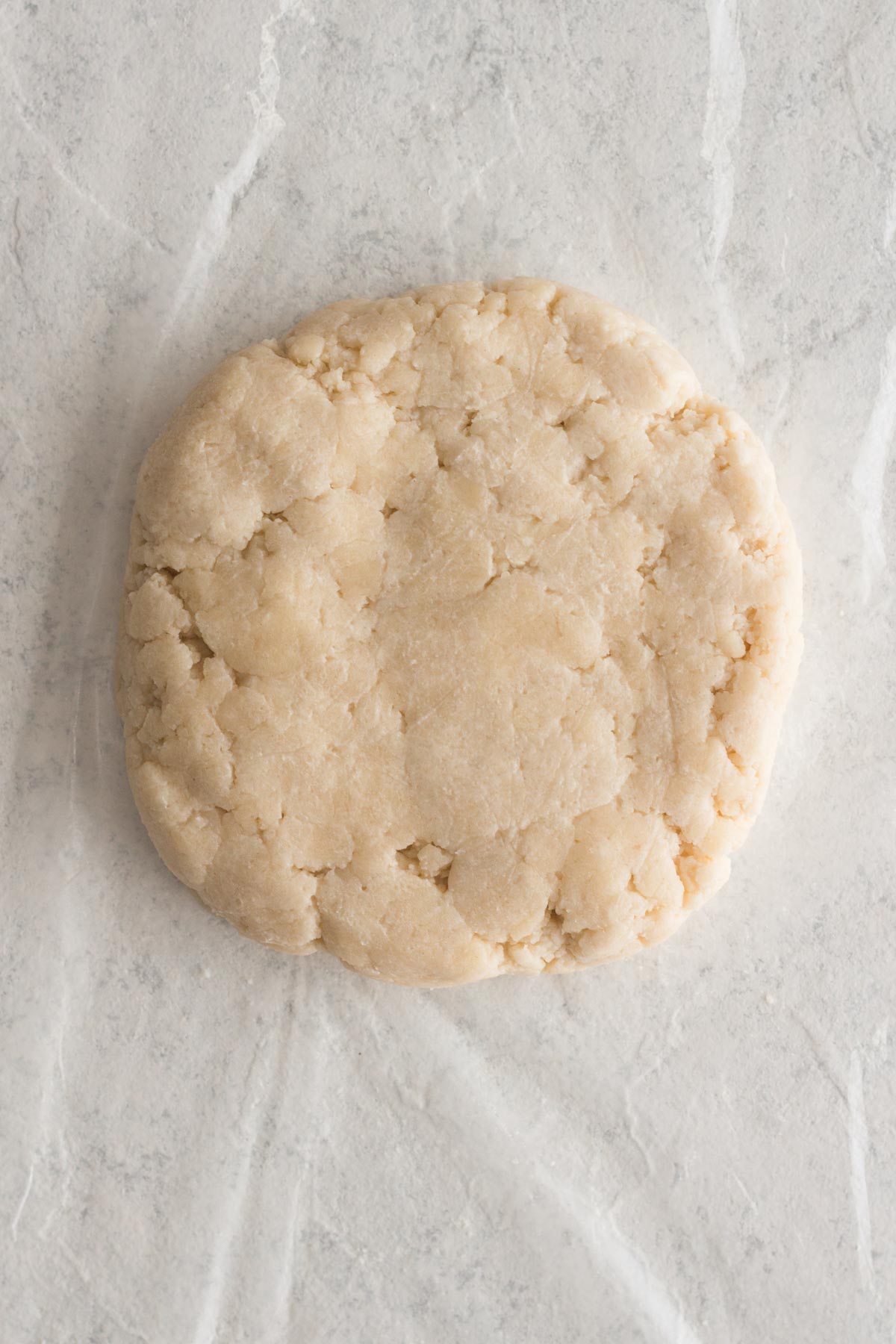
Step 5: Divide the dough in half and flatten each portion of dough into a disk about 1 inch thick. The dough should flatten easily without crumbling.)Wrap each disk of dough tightly in plastic wrap and refrigerate for at least 2 hours.
See recipe card at the bottom of this post for detailed recipe instructions.
Recipe Tips
Chill your ingredients. Cold ingredients, especially cold fat, are essential to the texture of the pie crust, so be sure that the fat and any other liquids added to the dough are cold. Prep these ingredients in advance and place them in the fridge, taking them out just before adding them to the dough for optimal coldness.
Don't overwork the dough. As with many baked goods, overworking the dough when mixing will yield a tough crust. Be careful to mix the dough just until it's come together and resist any urge to keep mixing. I like to use a fork to toss the dough in step 4 because I find it easier to toss gently without over mixing compared to using a wooden spoon or rubber spatula.
Bake the pie in a glass pie plate. Unless the recipe you're using specifies otherwise, I recommend baking your pie in a glass pie plate. This allows for even heat distribution and lets you see the crust as it bakes so that you can avoid the dreaded soggy pie crust. This glass pie plate is my go-to because of its perfect size (standard 9 inch diameter) and no-frills design.
Bake the pie in the bottom third of the oven. Unless the recipe you're using states otherwise, place the oven rack in the bottom third of the oven (I use the second lowest of 5 rungs in my oven) to bake your pie. This will put the bottom crust closer to the heat source to help ensure a well cooked (and not soggy) bottom crust.
Shield the pie crust as it bakes. If the crust begins to brown before the pie filling is finished baking, a pie crust shield really comes in handy. About 20 minutes after the pie goes into the oven, quickly but carefully open the oven and reach in to place a silicone pie crust shield or a bit of aluminum foil around the edges of the pie to keep the crust from burning while the pie filling continues to bake.
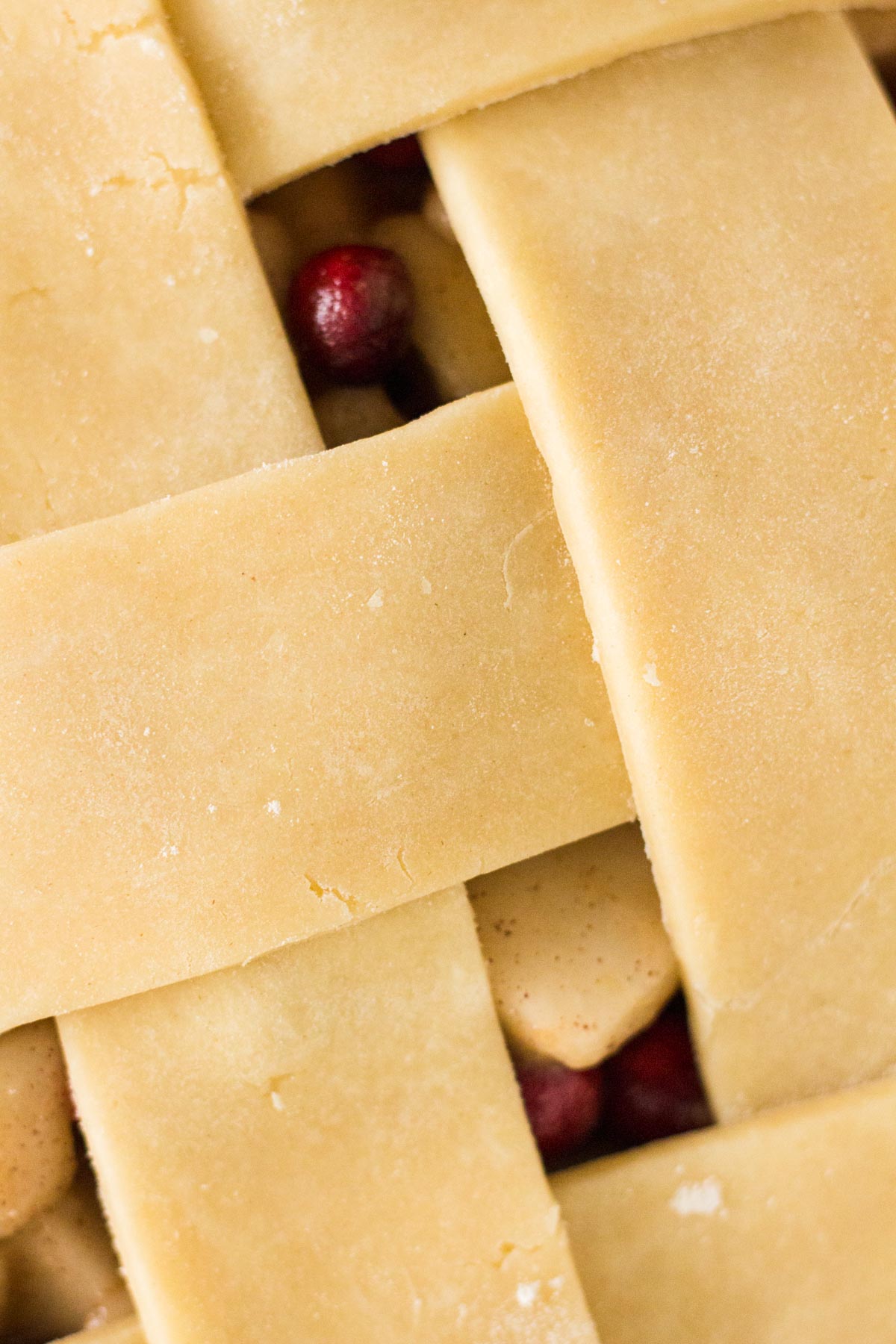
Recipe FAQs
Absolutely! In fact, I recommend it. How far in advance you make the dough will determine if you should store it in the fridge or freezer (see storage instructions below for guidance). If you'll be freezing your dough, here's everything you need to know about how to freeze pie crust dough.
Storage Instructions
Room Temperature: Baked pie crust can be stored at room temperature for up to 5 days. However, if baked in a pie, consider if the pie filling requires refrigeration.
Refrigerator: Pie crust dough can be stored in the fridge (wrapped tightly in plastic wrap) for up to 3 days before rolling and baking.
Freezing: The dough can be frozen (place the dough, wrapped tightly in plastic, into a freezer safe container or plastic bag) for up to 3 months and thawed overnight in the fridge before rolling and baking. Be sure to check out my tips for freezing pie crust.
Love this recipe? Please leave a star rating and review on the recipe below! And don't forget to subscribe to Always Eat Dessert for even more simple recipes, baking tips, and inspiration.
Recipe
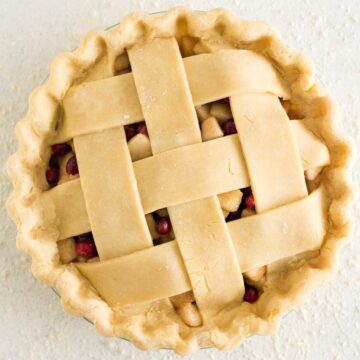
Perfect Homemade Pie Crust
Special Equipment
- food processor
Ingredients
- 2 ½ cups all-purpose flour, divided
- 2 Tablespoons granulated sugar
- 1 teaspoon fine sea salt
- 1 ¼ cup unsalted butter, cut into ¼ inch pats and chilled*
- 3 Tablespoons orange juice, pulp-free and chilled
- 3 Tablespoons vodka or ice water, chilled**
Instructions
- Add 1 ½ cups of the flour, all of the sugar, and all of the salt to the bowl of a food processor. Pulse to blend.
- Spread the chilled pats of butter over the surface of the flour mixture and pulse until no dry flour remains and the dough just begins to clump. (At first, the dough will look like coarse meal. Keep pulsing. When it begins to clump and stick around the edges of the food processor, you're ready for the next step.)
- Using a rubber spatula, spread the dough evenly around the bowl of the food processor. Sprinkle the remaining cup of flour over the dough and pulse until dough is just barely broken up, about 5 pulses. (The dough will be crumbly, but there should be lots of pea-sized chunks and no dry flour.)
- Transfer the dough to a large bowl. Sprinkle the chilled orange juice and vodka into the bowl and, using a fork, gently toss and fold the dough until it comes together. (The dough will still be a bit crumbly, but it will be moistened throughout and the bits will stick together easily when the dough is folded.) It's important not to overwork the dough here, because overworked dough leads to tough pie crust.
- Divide the dough in half and flatten each portion of dough into a disk about 1 inch thick. (The dough should flatten easily without crumbling.) Wrap each disk of dough tightly in plastic wrap and refrigerate for at least 2 hours.
- Once the dough has chilled, roll, fill, and bake the pie crust according to your favorite pie recipe.


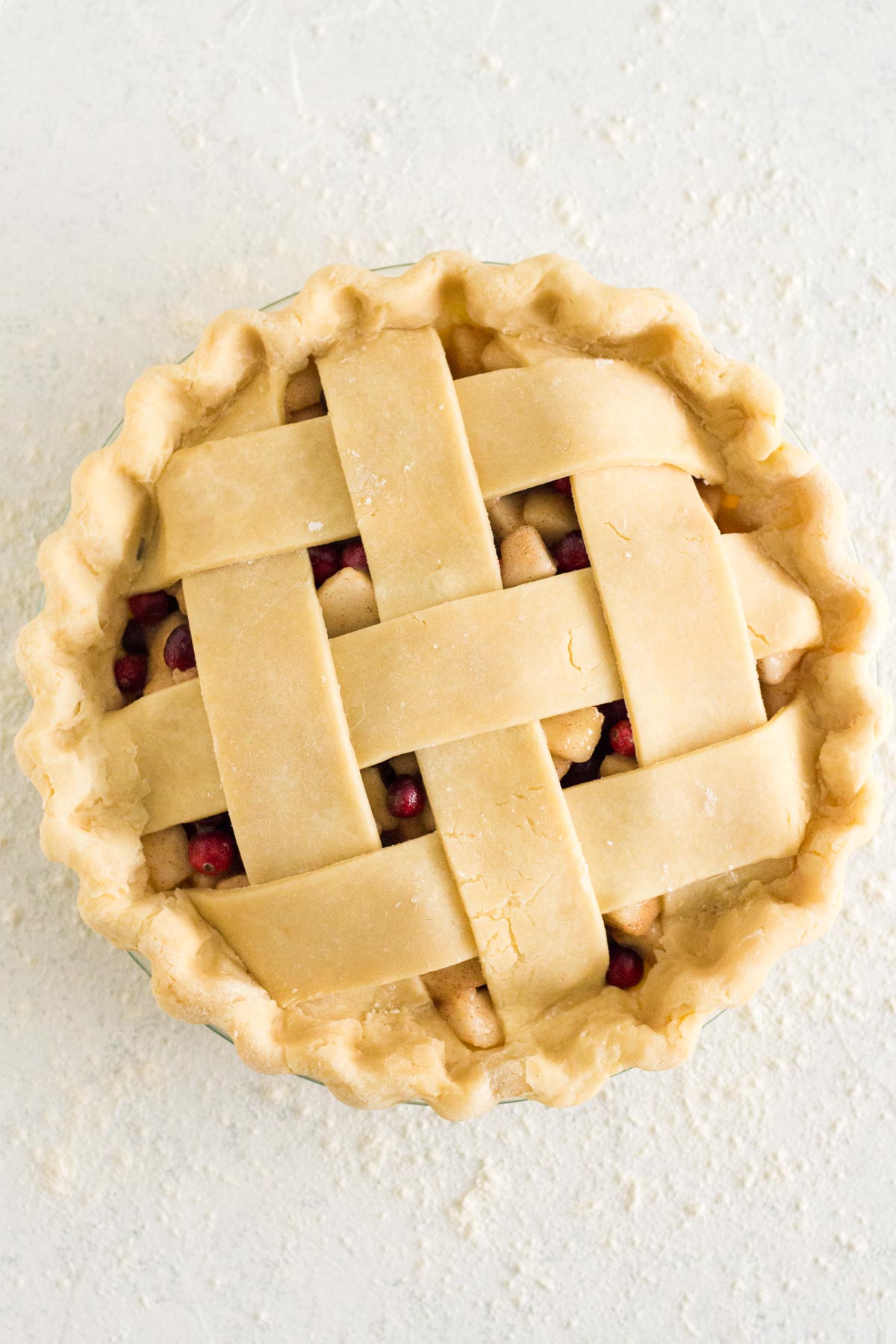
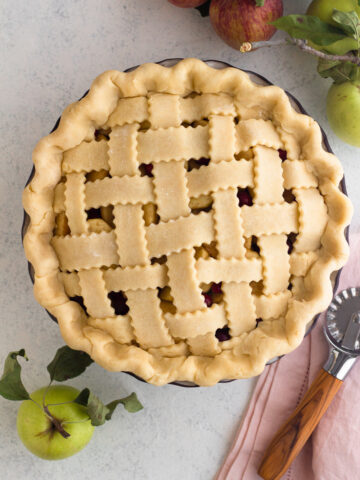
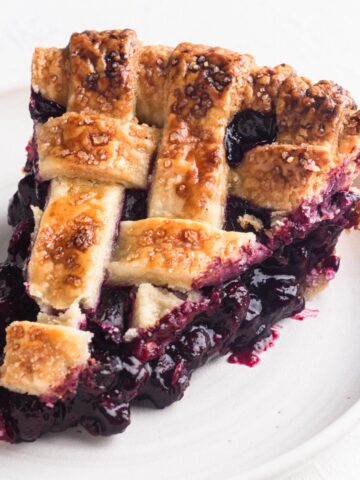
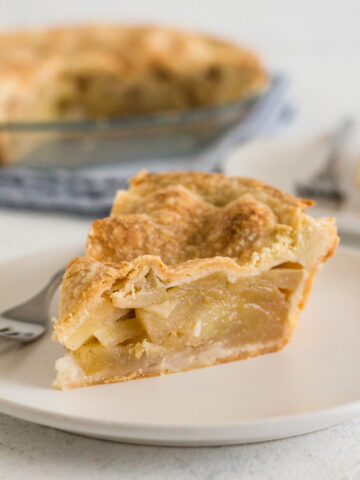
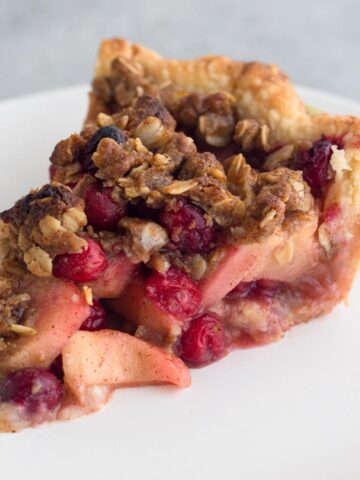
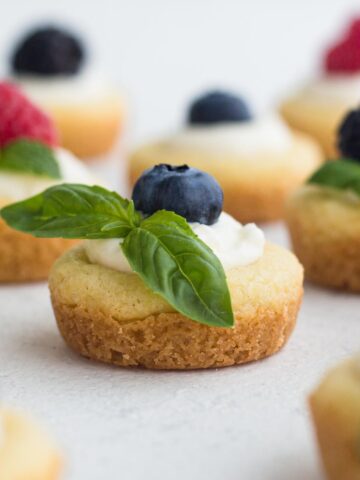
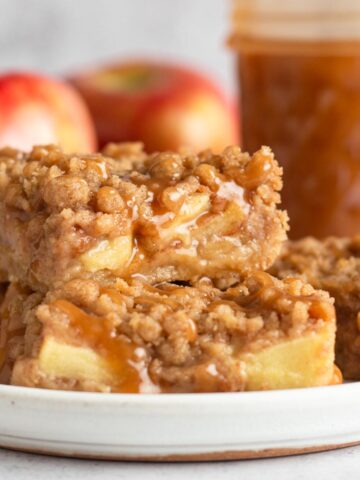
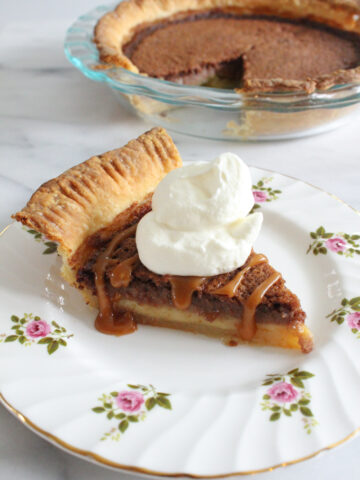
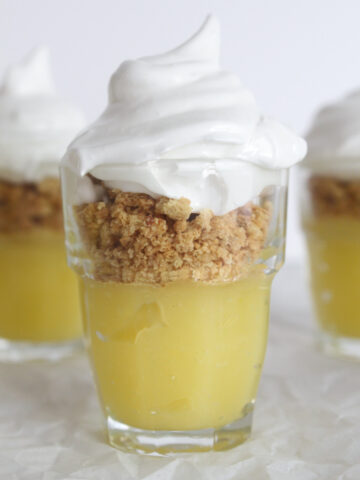
Gigi
I’m a sweet butter person but when it comes to pie crust, shortening was always my go to because it made the flakiest crust. However, since they removed the trans fat in shortening the crust is now terrible. I have tried all butter and find it less flakey and almost too rich. It’s very frustrating because my pie crust was truly delicious, tender and flaky and now it’s not worth the trouble. I may try your recipe but I would not want to use Orange juice. What can I substitute?
Allison Ferraro
Hi Gigi! The orange juice in this recipe adds a hint of acidity to the crust without adding orange flavor. However, if you do not wish to use OJ you can substitute an equal measure of ice water.
- Allison